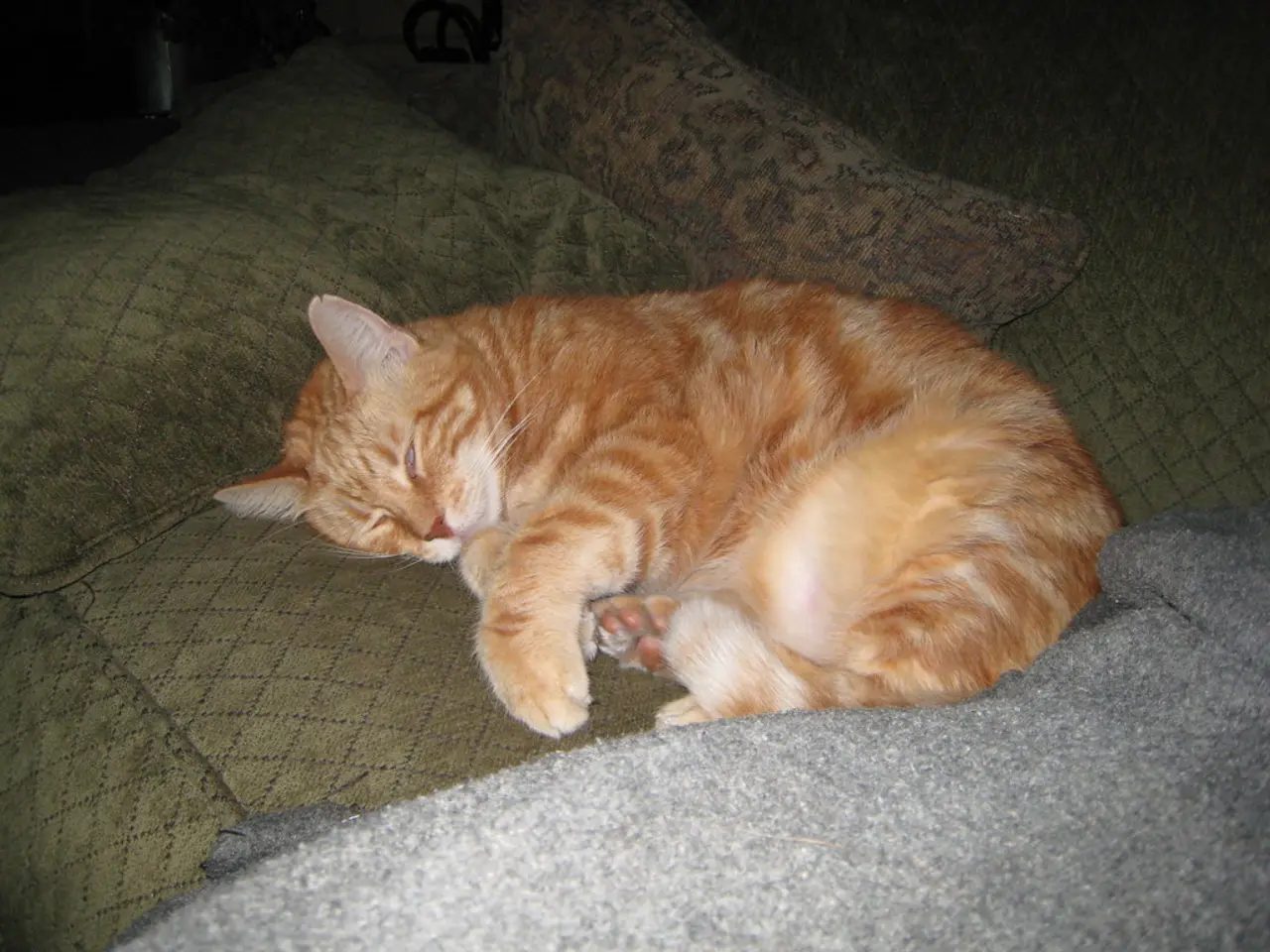Feline Behavior: Why Constant Leg-Positioning by Your Cat?
Article: Cats Sleeping Between Legs: A Sign of Trust and Bonding
Cats, known for their independent nature, often surprise us with their affectionate behaviour. One such behaviour that has caught the attention of many cat lovers is sleeping between their legs. This habit, while unusual to some, is typically harmless and often flattering for cat enthusiasts.
The Cornish Rex cat breed, with their thin, curly coat and high activity level, have a special preference for warm and secure sleeping places. This makes them more likely to be found sleeping between human legs or on laps, providing them with warmth, security, and a way to bond closely with their owners.
Sleeping on or near another's body is a natural form of connection for animals that feel safe. For cats, this behaviour can be a sign of trust and bonding. However, it's important to note that if a person is a light sleeper or finds the habit uncomfortable, they can gently encourage their cat to choose a new sleeping spot.
Providing each cat with their own comfortable sleeping space can reduce competition and help prevent stress-related behaviours. It's essential to ensure that every feline member of the household has a place to call their own, promoting a peaceful and stress-free environment.
While the sight of a cat sleeping between your legs can bring a sense of comfort and companionship, it's crucial to monitor for signs of stress or health issues. A sudden change in a cat's sleeping behaviour or clinginess may indicate stress or health issues. Keep an eye out for changes in litter box habits, vocalizations, or decreased appetite, and consult with a vet if you notice any concerning changes.
Cats can exhibit the same bonding behaviour with other cats or even dogs in the household. If you have multiple pets, you might find them snuggled up together, demonstrating their close bond. This behaviour is a testament to the social nature of cats, even when they are often perceived as solitary creatures.
Clicker training or positive reinforcement can help a cat adjust without stress. By associating a click with a reward, you can encourage your cat to associate new behaviours with positive experiences, making it easier for them to adapt to changes in their environment or routine.
A simple yet effective trick to help your cat feel at home in their new sleeping space is to place a worn T-shirt in the area. The familiar scent can help your cat feel more comfortable and relaxed, making the transition smoother.
In conclusion, the sight of a cat sleeping between your legs is a beautiful display of trust and bonding. By providing them with a comfortable environment and monitoring their health, we can ensure that our feline friends feel loved and secure, enhancing the bond between us.








